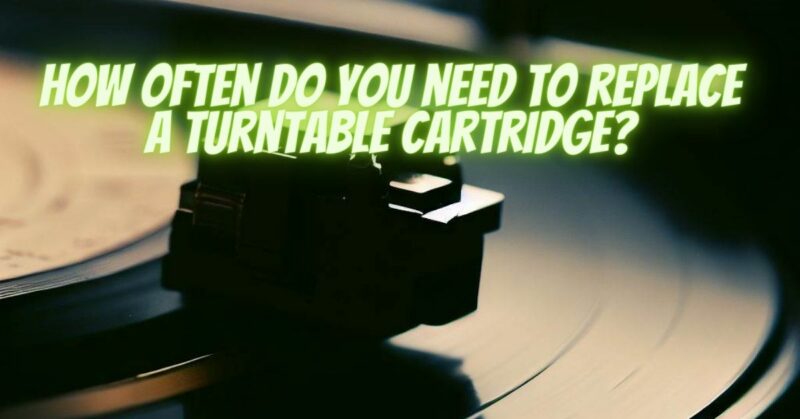A turntable cartridge is a vital component in the world of vinyl playback, responsible for reproducing the analog music embedded in vinyl records. Over time, due to the delicate nature of its stylus and mechanical components, a cartridge’s performance can decline. This prompts the question: How often should you replace a turntable cartridge? In this article, we’ll explore the factors that influence the lifespan of a cartridge and provide guidance on when it’s time for a replacement.
Factors Influencing Replacement Frequency
- Usage Hours: The most significant factor determining when to replace a turntable cartridge is the number of hours it has been used. On average, cartridges can last anywhere from 500 to 2,000 hours of playtime. High-quality cartridges with precision engineering and durable materials might last longer, while budget options might have a shorter lifespan.
- Listening Habits: Your listening habits play a role in how quickly a cartridge wears out. If you’re an avid listener who enjoys extended listening sessions, your cartridge may wear out sooner compared to someone who listens occasionally.
- Record Condition: The condition of your vinyl records also impacts cartridge life. Well-maintained records with minimal scratches and dust will lead to less wear on the stylus.
- Stylus Shape and Material: The shape and material of the stylus tip influence how well the cartridge tracks the grooves. Higher-quality stylus materials tend to last longer.
- Tracking Force and Alignment: Proper setup is crucial for extending cartridge life. Incorrect tracking force and misalignment can lead to uneven wear on the stylus, prompting earlier replacement.
Signs It’s Time for Replacement
- Sound Quality Degradation: As a cartridge wears out, its ability to accurately reproduce music deteriorates. You might notice a decrease in clarity, detail, and overall sound quality.
- Distorted Playback: Distortion, sibilance, or tracking issues that cannot be resolved with cleaning or adjustments might indicate a worn-out stylus.
- Excessive Surface Noise: If you hear more crackling and popping sounds than usual, it could be a sign that your stylus is no longer tracking the grooves properly.
- Visual Inspection: Take a close look at the stylus under a magnifying glass. If you notice excessive wear, chipping, or flattening of the stylus tip, it’s likely time for a replacement.
Prolonging Cartridge Lifespan
- Proper Setup and Maintenance: Follow manufacturer guidelines for setup, tracking force, and alignment. Regularly clean your stylus and records to prevent premature wear.
- Gentle Handling: Handle records and the tonearm with care to avoid accidental damage to the stylus and other components.
- Replacement Awareness: Keep track of your cartridge’s usage hours and be prepared to replace it when it approaches its expected lifespan. Continuing to use a worn-out cartridge can lead to poor sound quality and potential damage to your records.
The lifespan of a turntable cartridge is influenced by usage hours, listening habits, record condition, stylus quality, and proper setup. While there’s no one-size-fits-all answer to how often a cartridge should be replaced, paying attention to signs of sound degradation, distorted playback, excessive surface noise, and stylus wear can guide your decision. By understanding the factors that affect cartridge lifespan and practicing proper maintenance, you can enjoy optimal sound quality from your vinyl collection while ensuring the longevity of this critical component.


